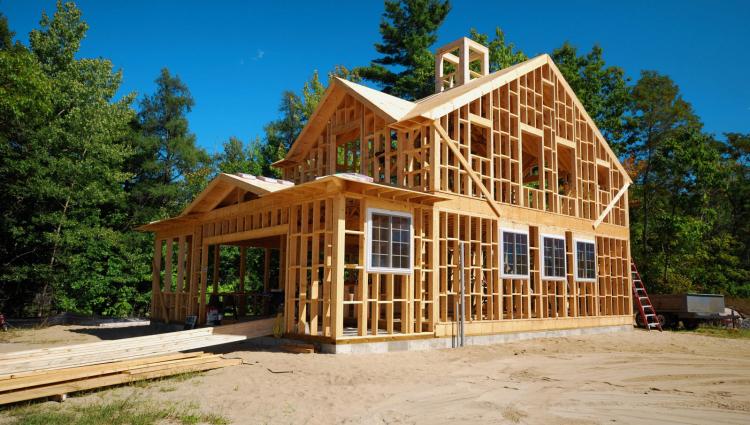
The dream of constructing a property from the ground up is an exciting and fulfilling experience. However, turning this vision into reality often Byggnadskreditiv significant financial resources, and few individuals or businesses possess the full amount upfront. This is where a loan to build property—commonly referred to as a construction loan—becomes essential. A construction loan is specifically designed to finance the building of residential, commercial, or mixed-use structures. Unlike a traditional mortgage that covers an existing property, construction loans offer funds incrementally as the project progresses. These loans not only bridge the gap between ambition and affordability but also come with unique features that potential borrowers must fully understand before embarking on the construction journey.
One of the most notable differences between a loan to build property and a traditional mortgage is the disbursement process. With a mortgage, the full loan amount is typically disbursed at once when the property purchase is completed. However, construction loans are structured differently. Lenders release the funds in stages or “draws” as specific milestones in the construction process are reached. This ensures that the money is being used for its intended purpose, reducing the risk for both the lender and the borrower. For instance, a draw might be released once the foundation is laid, another after the frame is completed, and so on. This phased approach helps maintain accountability in the building process and ensures that the project remains on track.
A critical aspect of securing a construction loan is preparing a detailed construction plan and budget. Lenders will require a thorough understanding of how the funds will be allocated, the timeline of the construction, and who the contractors or builders involved in the project are. This means that borrowers must work closely with architects, contractors, and other professionals to create a comprehensive blueprint of the project. Lenders typically assess this information meticulously because the success of the project—and the likelihood of loan repayment—depends on accurate and realistic planning. Additionally, the borrower’s ability to manage unforeseen costs that arise during construction will be factored into the lender’s risk evaluation.
The approval process for a loan to build property also hinges on the borrower’s financial standing. Since construction loans are considered higher risk than traditional mortgages, lenders often have stricter eligibility criteria. A solid credit score, stable income, and a substantial down payment (usually ranging from 20% to 30%) are often required to secure the loan. Additionally, lenders may require a thorough examination of the borrower’s debt-to-income ratio and liquidity. A borrower must demonstrate not only the ability to handle the costs of construction but also enough financial flexibility to manage potential overruns or delays in the project.
Interest rates on construction loans are generally higher than those on traditional mortgages, reflecting the higher risk that lenders assume. Additionally, these loans often come with adjustable rates that can fluctuate throughout the construction process. While fixed-rate options are sometimes available, adjustable-rate loans are more common because they accommodate the evolving nature of construction. Borrowers must carefully assess the impact of rising rates, particularly for longer construction projects, as it could affect the total cost of the loan. Despite these potentially higher rates, construction loans offer greater flexibility, especially for those who wish to customize their projects from scratch.
Once construction is complete, the borrower typically transitions from a construction loan to a traditional mortgage through a process known as loan conversion. Some lenders offer construction-to-permanent loans, which automatically convert into a standard mortgage once the building is finished. This option simplifies the borrowing process by avoiding the need to apply for two separate loans. However, other lenders might require the borrower to secure a new mortgage after construction, which can involve additional costs and refinancing procedures. It is important to clarify the terms of conversion before entering into a loan agreement.
For those considering building a property for investment purposes, such as rental apartments or commercial spaces, construction loans offer an avenue to maximize potential returns. By financing the construction through a loan, investors can leverage their capital to undertake larger projects than they could fund independently. However, they must also consider the risks associated with market fluctuations, construction delays, or regulatory changes, which could impact the profitability of the project. Thorough market research and careful financial forecasting are essential to ensure that the expected rental income or sale price will justify the cost of the loan and construction.
In addition to private lenders, government-backed programs like Federal Housing Administration (FHA) loans or Department of Veterans Affairs (VA) loans offer construction loans under specific conditions. These programs often have more lenient eligibility requirements and lower down payment options, making them an attractive choice for certain borrowers. However, they also come with their own set of regulations and restrictions, so it’s essential for borrowers to understand the nuances of these programs before applying.
Before committing to a loan to build property, borrowers should also consider alternative financing options. For example, some may choose to combine personal savings with smaller loans or seek out private investors to share in the project’s cost. Additionally, partnerships with real estate developers or using funds from other real estate assets can offer viable alternatives to traditional construction loans. The chosen financing route should align with the scale of the project, the borrower’s long-term goals, and the associated risks.
Lastly, borrowing to build a property requires diligent risk management strategies. Construction projects are notorious for unexpected delays, cost overruns, and other complications that can affect timelines and budgets. To mitigate these risks, borrowers should work with reputable contractors, set aside a contingency fund for unforeseen expenses, and maintain clear communication with lenders throughout the process. Having a flexible plan and being prepared to adapt to changes will ensure a smoother experience, reducing financial strain during the construction journey.